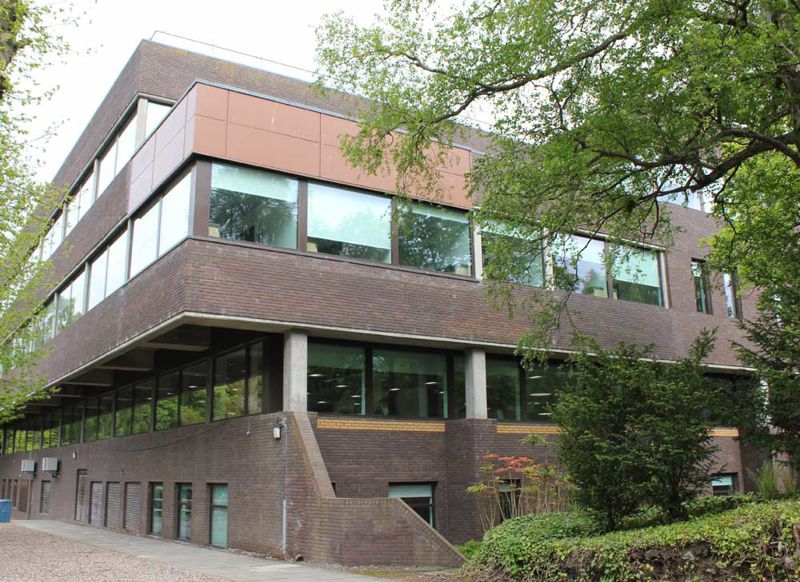Post 9: The Library and Riccarton House
At the heart of the estate, on the site now occupied by the Library, Museum and Archive, once stood Riccarton House, a fine mansion in the elegant setting of ornamental gardens and a loch.

The first written reference to Riccarton dates from 1296, when Marjory of “Ricardestone” was among thousands of Scottish landowners forced to swear loyalty to King Edward I of England.
In 1315, King Robert Bruce, asserting Scotland's independence after years of bloody battle, gave the lands of Richardtoun as a dowry on the marriage of his daughter Marjory to Walter, High Steward of Scotland. By 1508, the Wardlaw family, who held Riccarton as tenants in chief from the King, had built a substantial fortified tower to protect themselves and their land. In 1610, the Craigs, a family of wealthy lawyers, bought Riccarton. Sir Lewis Craig extended the tower in 1621, transforming the grim fortress into a luxury home. Over the next two centuries the Craigs built up an extensive estate including lands in Currie, and Hermiston House.
In 1827 Sir James Gibson-Craig commissioned a leading architect to remodel the house in the latest Scottish Baronial style. The Gibson-Craigs made Riccarton a hub of social and political influence and took an active part in community life. They gifted land and money to Currie Kirk, Baberton golf club and Currie bowling green and hosted curling tournaments at Riccarton.
During the Second World War, Riccarton became an army base and later, a resettlement camp for ex-prisoners of war, before becoming then headquarters of the Royal Artillery 3rd Anti-Aircraft Group. By this time, the house had fallen into disrepair and it was demolished in 1956. Since the University acquired the Riccarton Estate in 1969, campus development has been carefully planned around the beautiful landscape.